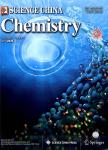Lighting up aggregate emission of perylene diimide by leveraging polymerization-mediated through-space charge transfer and π-π stacking
作者机构:Institute of Pharmaceutical Sciences Department of Chemistry and Applied Biosciences ETH Zurich Vladimir-Prelog-Weg 3 Institute for Chemical and Bioengineering Department of Chemistry and Applied Biosciences ETH Zurich Vladimir-Prelog-Weg 1-5 ARC Centre of Excellence in Exciton Science School of Science RMIT University School of Science STEM College RMIT University
出 版 物:《Science China Chemistry》 (中国科学:化学(英文版))
年 卷 期:2024年
核心收录:
学科分类:081704[工学-应用化学] 07[理学] 08[工学] 0817[工学-化学工程与技术] 070305[理学-高分子化学与物理] 080501[工学-材料物理与化学] 0805[工学-材料科学与工程(可授工学、理学学位)] 0703[理学-化学]
基 金:supported by Swiss National Science Foundation (190313) Fondation Claude et Giuliana (1-005137) the Australian Research Council (ARC) under the Centre of Excellence Scheme (CE170100026) computational resources provided by the Australian Government through the National Computational Infrastructure National Facility and the Pawsey Supercomputer Centre
摘 要:The molecular engineering of fluorescent organic/polymeric materials, specifically those emitting in the deep red to near-infrared spectrum, is vital for advancements in optoelectronics and biomedicine. Perylene diimide(PDI), a well-known fluorescent scaffold, offers high thermal and photophysical stability but suffers from fluorescence quenching in solid or aggregate states due to intense π-π interactions. To mitigate this, simple and versatile methods for strong PDI aggregate emission without extensive synthetic demands are highly desirable but still lacking. Here, we report a straightforward strategy to enhance the solid-state emission of PDI by introducing certain degree of through-space charge transfer(TSCT) via controlled radical polymerization,which can efficiently distort the typical face-to-face PDI stacking, enabling greatly enhanced deep red emission. This is achieved by growing electron-donating star-shape styrenic(co)polymers from a multidirectional electron-accepting PDI initiator. The incorporation of polycyclic aromatic monomers further shifted the emission into the near-infrared region, albeit with a reduced intensity. Overall, the emission of the PDI-based TSCT polymers can be systematically manipulated by leveraging the balance between PDI stacking and the TSCT degree, as confirmed by both experimental study and theoretical calculations. Our approach circumvents complex synthetic procedures, offering highly emissive materials with large Stokes shifts and showing broad potential for optoelectronic technology.



